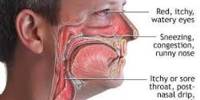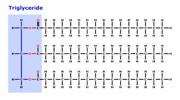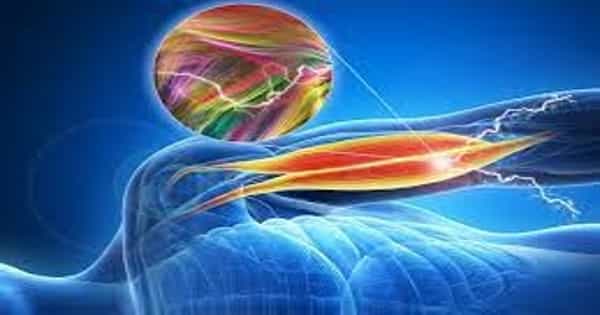Traumatic Brain Injury (TBI) refers to damage caused to the brain as a result of a sudden and violent blow or jolt to the head or body. It can also occur when an object pierces the skull and enters the brain tissue. TBIs can range from mild to severe, and they can have both short-term and long-term effects on a person’s physical, cognitive, emotional, and behavioral functioning.
Each year, over 1.5 million Americans survive traumatic brain injuries brought on by falls, auto accidents, or sports-related injuries, which can lead to both short- and long-term disability.
University of Maryland School of Medicine (UMSOM) researchers wanted to better understand what happens in the brain during injury, so they conducted a study in mice to determine how different types of brain cells in mice react to severe trauma.
In a recent study, which was published in the January edition of Autophagy, it was shown that following traumatic brain injury, the internal recycling function of the brain’s immune system cells slowed noticeably, allowing waste products to accumulate and obstruct injury repair.
The researchers also discovered that administering a medication to stimulate cellular recycling to mice with traumatic brain injury increased the mice’s recovery from injury and their capacity to navigate a water maze, a test of their memory function.
“Many drugs and potential solutions have been proposed to treat traumatic brain injury, but none have ever worked in practice,” said lead researcher Marta Lipinski, PhD, Associate Professor of Anesthesiology and Anatomy & Neurobiology at UMSOM and a member of the Shock, Trauma, and Anesthesiology Research (STAR) Center at the University of Maryland Medical Center (UMMC).
“It could be that designing drugs for patients that promote this cellular recycling might reverse or prevent damage from traumatic brain injury as we saw in our animal studies. We are continuing to learn more about the molecular and cell biology mechanisms in trauma, so we can use a more guided approach for developing solutions.”
The drug we used in our study blocks a set of proteins that are important for regenerating the body’s cells, so it cannot be used for extended time periods. We need to continue this line of research to identify the exact mechanism of how autophagy protects against neurological damage in order to find more targeted drugs that increase this process without targeting the vital proteins needed by the brain to regenerate.
Professor Marta Lipinski
In a process known as autophagy, the body’s cells routinely recycle their own worn-out or damaged components that accumulate as a result of regular wear and tear, infection, or injury. For cleaning up their own trash and recycling it on a smaller scale, the majority of brain cells employ that technique.
In a previous study, Dr. Lipinski’s group showed that traumatic brain injury reduced the ability of neurons the cells that send electrical impulses to recycle their own damaged parts, which then led to these neurons dying off.
The brain’s resident immune cells, known as microglia, can engulf, digest, and recycle entire injured or dead cells in the tissue, but other brain cells are capable of far greater recycling feats.
White blood cells that are typically blocked by the blood-brain barrier can enter the brain after a traumatic brain injury and interact with the microglia cells to consume and eliminate damaged cells.
For this new study, Dr. Lipinski’s team focused on the immune cells microglia and white blood cells in the brain after traumatic brain injury and found that, like the neurons, their recycling function was also suppressed.
“Dr. Lipinski’s discovery of the recycling function suppression in both neurons and immune cells demonstrates how important it is for neuroscientists to fully understand the complex system involved in a traumatic brain injury,” said Dean Mark Gladwin, MD, who is Vice President for Medical Affairs at the University of Maryland, Baltimore, and the John Z. and Akiko K. Bowers Distinguished Professor at UMSOM. “Developing effective drugs for traumatic brain injury treatment requires a deeper understanding of these cell-to-cell interactions and what impact each cell type has on the brain’s ecosystem.”
Dr. Lipinski and her colleagues blocked one of the crucial proteins required to carry out the immune cell’s recycling function in the brains of mice with brain injuries in order to show the entire impact of the recycling mechanism on traumatic brain damage and recovery.
These mice had their cell-recycling processes much more suppressed, which led to increased brain inflammation. They also fared worse than the mice who had only brain damage when it came to being able to navigate the water maze.
According to these results, the brain’s immune cells’ capacity to recycle is crucial for the recovery process following brain injury. On the other hand, increasing it might minimize the trauma’s effects.
To test that, the researchers used a drug, rapamycin (normally used as a cancer drug or to prevent organ rejection), to promote cellular recycling in the brains of mice who had traumatic brain injury. Researchers discovered that after therapy, the mice’s levels of brain inflammation decreased, and these animals performed better in the water maze.
“The drug we used in our study blocks a set of proteins that are important for regenerating the body’s cells, so it cannot be used for extended time periods,” said Dr. Lipinski. “We need to continue this line of research to identify the exact mechanism of how autophagy protects against neurological damage in order to find more targeted drugs that increase this process without targeting the vital proteins needed by the brain to regenerate.”
















